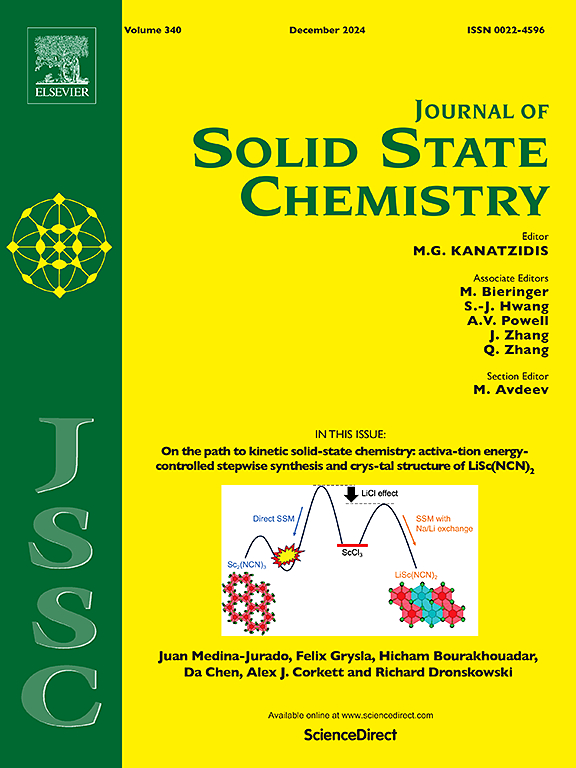Improvement of CuBr1–xIx absorption layers in transparent solar cells by halide-solution soaking
IF 3.2
3区 化学
Q2 CHEMISTRY, INORGANIC & NUCLEAR
引用次数: 0
Abstract
The development of efficient p-type transparent conducting films is important for solar cell applications. P-type semiconductors tend to have higher resistivities, lower carrier concentrations, and lower mobilities than n-type transparent conductive oxides. To improve the quality of CuBr1-xIx (CuBrI) as a transparent p-type semiconductor, a CuBrI film fabricated by spin-coating was soaked in a potassium bromide solution up to three times. Bromination increased the number of Br atoms in the film and decreased the resistivity. However, bromination increased the surface precipitation and roughness while reducing the film thickness. Photoluminescence (PL) spectroscopy demonstrated strong blue emission and weak red emission around 2.83 eV and 1.8 eV, respectively. A Gaussian analysis of the strong blue emission resolved the emission at 2.83 eV (P1) from free exciton recombination luminescence and a new emission at 2.75 eV (P2). The intensity of the exciton luminescence increased after bromination. P2 was inferred to originate from Cu defects, and the area ratio of P2 to P1 increased with the number of bromination cycles. The results of the PL and resistivity measurements indicated that bromination improved the quality of the CuBrI thin films; however, excessive bromination was counterproductive because it deteriorated the films. These findings demonstrate the importance of the halogen ratio on CuBrI film performance in transparent solar cell applications.

求助全文
约1分钟内获得全文
求助全文
来源期刊

Journal of Solid State Chemistry
化学-无机化学与核化学
CiteScore
6.00
自引率
9.10%
发文量
848
审稿时长
25 days
期刊介绍:
Covering major developments in the field of solid state chemistry and related areas such as ceramics and amorphous materials, the Journal of Solid State Chemistry features studies of chemical, structural, thermodynamic, electronic, magnetic, and optical properties and processes in solids.
 求助内容:
求助内容: 应助结果提醒方式:
应助结果提醒方式:


